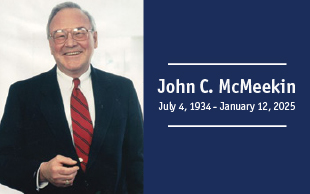NEWS RELEASE
FOR IMMEDIATE RELEASE
September 25, 2012
Contact: Tine Hansen-Turton (215.820.8451 or This email address is being protected from spambots. You need JavaScript enabled to view it.)
A Survey of National Health Insurers Shows Advances in Nurse Practitioner Credentialing and Reimbursement
PHILADELPHIA - A recent national survey of health insurers, specifically Health Maintenance Organizations (HMOs), conducted by the National Nursing Centers Consortium (NNCC), a support organization for nurse-led care, reveals that 75% of HMOs credential with nurse practitioners as primary care providers, an increase over previous years. Data were collected from 258 health maintenance organizations (HMOs) managed by 98 insurance companies across 50 states and the District of Columbia in from June 2011 to May 2012.
“Compared with similar research we’ve done previously, this survey seems to indicate that more health insurers are credentialing nurse practitioners as primary care providers, which is an improvement. But it won’t be enough given the millions more Americans who will be insured after 2014, and a projected shortage of primary care physicians of about 60,000 by 2015. Unless we get to 100% credentialing, we should expect a repeat of the circumstances in Massachusetts in 2007, when the supply of primary care providers was far too low to meet new patient demand,” says Tine Hansen-Turton, chief executive officer of NNCC.
Out of 499 total attempted contacts, 258 HMOs participated and were included in the survey sample. Of these, 192 (74%) indicated that they credential nurse practitioners as primary care providers. Two of the plans (fewer than 1%) did not normally credential nurse practitioners as primary care providers but indicated they would occasionally make exceptions if nurse practitioners provided care in underserved rural areas.
"Increased credentialing of nurse practitioners as primary care providers is important, but it is not enough to ensure patients have the access to care they need and to alleviate the growing national shortage of primary care providers,” says Amy Bell, senior finance director at the Larry Combest Community Health and Wellness Center in Lubbock, Texas. “Sometimes insurers will credential us, but will not reimburse us directly, will not list us on their websites as primary care providers, or they will put stipulations in our contracts. For the health care system to be ready for the huge influx of new patients in 2014, all nurse practitioners must be able to practice to, and be compensated for, the full scope of their ability." Hansen-Turton adds, “This is the time to leverage our lower cost structure by combining with safety-net provider networks to offer new, low price-point, high quality, holistic options in state insurance exchanges’ targeted areas.”
Since HMOs may serve any combination of Medicaid, Medicare and commercial enrollees, the survey categorized the 258 responding HMOs by product line. The Medicaid group consisted of 119 HMOs, of which 90 (76%) credentialed nurse practitioners as primary care providers. Of the 89 HMOs in the Medicare group, 74 (83%) credentialed nurse practitioners as primary care providers. The commercial HMO plans, numbering 111 in this survey, credentialed nurse practitioners as primary care providers at the lowest credentialing rate, with 74 (67%) affirming that practice. “As state health insurance exchanges add millions of newly insured lives, they also drive the need for more providers in the private insurance market,” says Hansen-Turton, “the low number of commercial insurance plans that credential nurse practitioners will increasingly be a challenge.”
For more information about the survey findings, contact Tine Hansen-Turton at This email address is being protected from spambots. You need JavaScript enabled to view it..
###
About NNCC
The largest organization of nurse-managed health centers in the United States, National Nursing Centers Consortium (NNCC) works to advance nurse-led health care through policy, consultation, programs and applied research to reduce health disparities and meet people’s primary care and wellness needs. Nurse-managed health centers are community-based practices led by advanced practice nurses (primarily nurse practitioners). The nation’s nurse-managed health centers reduce health disparities by providing high quality comprehensive primary health care, health promotion, and disease prevention services to uninsured and vulnerable patients in rural, urban, and suburban communities. In coming months, NNCC researchers will further analyze study results and prepare them for third-party publication.
About PHMC
Public Health Management Corporation (PHMC) is a nonprofit public health institute that creates and sustains healthier communities. PHMC uses best practices to improve community health through direct service, partnership, innovation, policy, research, technical assistance and a prepared workforce. PHMC has served the region since 1972. For more information on PHMC, visit www.phmc.org.





